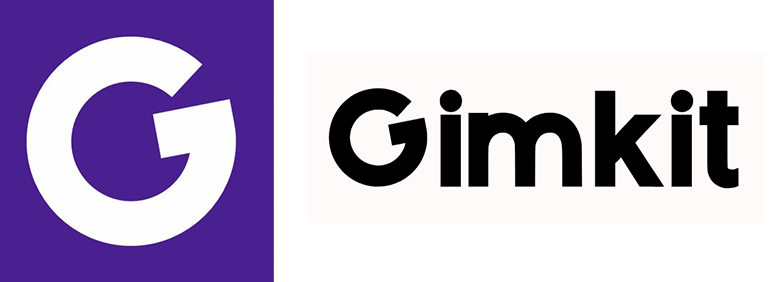Gimkit Host: Guide to Hosting Your Gimkit Experience

Gimkit is an interactive and engaging educational platform that has revolutionized the way teachers and students approach learning. At the heart of this platform is the concept of the Gimkit host, a role that is crucial for facilitating games, managing sessions, and ensuring a seamless experience for all participants. In this article, we will explore everything you need to know about being a Gimkit host, from setting up games to optimizing the experience for your players.
What is a Gimkit Host?
A Gimkit host is the individual responsible for creating, managing, and overseeing a Gimkit game session. Whether you are a teacher, trainer, or event organizer, the role of the Gimkit host is pivotal in ensuring that the game runs smoothly and achieves its intended educational or entertainment goals.
As a Gimkit host, you have access to a variety of tools and features that allow you to customize the game to suit your audience. From selecting question sets to setting time limits and adjusting game modes, the host has full control over the session. This flexibility makes Gimkit a versatile tool for classrooms, corporate training, and even social gatherings.
How to Become a Gimkit Host
Becoming a Gimkit host is a straightforward process, but it requires a clear understanding of the platform’s features and functionalities. Below, we outline the steps to get started as a Gimkit host:
Step 1: Create a Gimkit Account
To become a Gimkit host, you first need to create an account on the Gimkit platform. Visit the official Gimkit website and sign up using your email address or Google account. Once your account is set up, you can access the host dashboard, where you can create and manage your games.
Step 2: Choose or Create a Kit
A “Kit” in Gimkit refers to a set of questions and answers that will be used during the game. As a Gimkit host, you have the option to either create your own Kit or use one from the Gimkit library. If you choose to create your own Kit, you can customize the questions to align with your specific learning objectives or topics.
Step 3: Set Up the Game
Once your Kit is ready, you can proceed to set up the game. This involves selecting a game mode, setting time limits, and configuring other settings such as power-ups and bonuses. The Gimkit host has the flexibility to tailor the game to the needs and preferences of the participants.
Step 4: Share the Game Code
After setting up the game, the Gimkit host will receive a unique game code. This code is shared with the participants, who can then join the game using their devices. The host can monitor the progress of the game in real-time and make adjustments as needed.
Step 5: Launch and Manage the Game
Once all participants have joined, the Gimkit host can launch the game. During the game, the host can monitor scores, answer questions, and provide guidance to ensure that the session is both fun and educational.
Tips for Being an Effective Gimkit Host
Being a successful Gimkit host requires more than just technical know-how. It also involves understanding your audience and creating an engaging and inclusive environment. Here are some tips to help you excel as a Gimkit host:
1. Know Your Audience
Before hosting a Gimkit game, take the time to understand your audience. Are they students, professionals, or casual players? Tailor the questions and game settings to match their interests and skill levels.
2. Use Engaging Content
The success of a Gimkit game largely depends on the quality of the content. As a Gimkit host, ensure that your questions are clear, relevant, and engaging. Incorporate multimedia elements such as images and videos to make the game more interactive.
3. Experiment with Game Modes
Gimkit offers a variety of game modes, each with its own unique mechanics and objectives. As a Gimkit host, don’t be afraid to experiment with different modes to keep your sessions fresh and exciting.
4. Provide Clear Instructions
Before starting the game, provide clear instructions to the participants. Explain the rules, objectives, and any special features of the game mode you have chosen. This will help prevent confusion and ensure a smooth experience for everyone.
5. Monitor and Adapt
During the game, keep an eye on the progress and engagement of the participants. If you notice that the game is too easy or too difficult, make adjustments on the fly. The ability to adapt is one of the key qualities of an effective Gimkit host.
Advanced Features for Gimkit Hosts
Gimkit offers a range of advanced features that allow Gimkit hosts to take their games to the next level. These features are designed to enhance the gameplay experience and provide additional tools for customization and analysis.
1. Power-Ups and Bonuses
Power-ups and bonuses are special features that can be enabled by the Gimkit host to add an extra layer of excitement to the game. These include abilities such as double points, immunity, and time extensions.
2. Team Mode
Team Mode allows participants to work together in groups, fostering collaboration and teamwork. As a Gimkit host, you can divide players into teams and track their collective progress.
3. Reports and Analytics
After the game, the Gimkit host can access detailed reports and analytics. These provide insights into the performance of individual players and the group as a whole, helping you identify areas for improvement.
4. Integration with Other Tools
Gimkit integrates seamlessly with other educational tools and platforms, such as Google Classroom. This makes it easier for Gimkit hosts to manage their sessions and share resources with participants.
Creative Ways to Use Gimkit in Different Settings
As a Gimkit host, you have the flexibility to adapt the platform to various environments and purposes. Here are some creative ways to use Gimkit beyond the traditional classroom setting:
1. Corporate Training and Team Building
Gimkit can be an excellent tool for corporate training sessions and team-building activities. As a Gimkit host, you can create Kits focused on company policies, product knowledge, or industry trends. Use Team Mode to encourage collaboration among employees and foster a sense of camaraderie.
2. Virtual Events and Webinars
In the age of remote work and virtual events, Gimkit can serve as an interactive icebreaker or engagement tool during webinars. As a Gimkit host, you can create quick quizzes or trivia games to keep participants engaged and energized.
3. Social Gatherings and Parties
Gimkit isn’t just for education—it can also be a fun addition to social gatherings. Host trivia nights or themed quizzes for friends and family. As a Gimkit host, you can customize questions to match the interests of your guests, making the event more personalized and enjoyable.
4. Professional Development Workshops
Use Gimkit to make professional development workshops more interactive. As a Gimkit host, you can create Kits that reinforce key concepts from the workshop and allow participants to test their knowledge in a fun and competitive way.
How to Engage Different Types of Learners as a Gimkit Host
One of the challenges of being a Gimkit host is catering to diverse learning styles. Here’s how you can engage different types of learners through your Gimkit sessions:
1. Visual Learners
Incorporate images, diagrams, and videos into your Kits. Visual learners benefit from seeing information presented in a graphical format, so make sure to include multimedia elements whenever possible.
2. Auditory Learners
For auditory learners, consider reading questions aloud or providing audio clues. As a Gimkit host, you can also encourage participants to discuss answers with their peers, which can help reinforce learning through listening and speaking.
3. Kinesthetic Learners
Kinesthetic learners thrive on hands-on activities. While Gimkit is primarily a digital platform, you can incorporate physical movement by having participants act out answers or use props during the game.
4. Reading/Writing Learners
Include written explanations and detailed questions in your Kits. Reading/writing learners appreciate having the opportunity to process information through text, so ensure your questions are clear and well-structured.
Troubleshooting Common Issues as a Gimkit Host
Even the most experienced Gimkit hosts may encounter challenges during a session. Here are some common issues and how to address them:
1. Participants Unable to Join the Game
If players are having trouble joining the game, double-check that they are entering the correct game code. Ensure that their devices are connected to the internet and that there are no firewall restrictions blocking access to Gimkit.
2. Technical Glitches
Occasionally, technical issues such as lag or freezing may occur. As a Gimkit host, you can minimize these problems by testing the game beforehand and ensuring that your internet connection is stable.
3. Lack of Engagement
If participants seem disengaged, try switching to a different game mode or introducing power-ups and bonuses to reignite their interest. As a Gimkit host, your enthusiasm and energy can also play a significant role in keeping the group motivated.
4. Uneven Participation
In some cases, a few participants may dominate the game while others remain passive. To address this, consider using Team Mode or adjusting the difficulty level to ensure that everyone has a chance to contribute.
Leveraging Gimkit for Assessment and Feedback
As a Gimkit host, you can use the platform not only for entertainment but also for assessment and feedback. Here’s how:
1. Formative Assessments
Use Gimkit to conduct formative assessments that provide real-time insights into participants’ understanding of a topic. The instant feedback feature allows you to identify areas where learners may need additional support.
2. Summative Assessments
While Gimkit is not a traditional testing tool, it can be used for summative assessments by creating Kits that cover the entire scope of a course or training program. As a Gimkit host, you can track individual scores and use them to evaluate performance.
3. Peer Feedback
Encourage participants to review each other’s answers and provide constructive feedback. This can be particularly effective in Team Mode, where collaboration and communication are key.
4. Self-Assessment
After the game, share the reports and analytics with participants so they can reflect on their performance. This promotes self-assessment and helps learners take ownership of their progress.
Building a Community as a Gimkit Host
Being a Gimkit host is not just about managing games—it’s also about building a community of engaged and motivated learners. Here’s how you can foster a sense of community through your Gimkit sessions:
1. Encourage Collaboration
Use Team Mode and group activities to promote collaboration among participants. As a Gimkit host, you can create opportunities for players to work together and learn from one another.
2. Celebrate Achievements
Recognize and celebrate the achievements of your participants, whether it’s a high score, a creative answer, or improved performance. This can be done through verbal praise, virtual badges, or small rewards.
3. Create a Safe and Inclusive Environment
As a Gimkit host, it’s important to create a safe and inclusive environment where everyone feels comfortable participating. Set clear expectations for behavior and address any issues promptly.
4. Gather Feedback
After each session, ask participants for feedback on the game and your hosting style. Use this input to improve future sessions and show your community that their opinions matter.
Exploring Gimkit’s Future Updates and Features
Gimkit is constantly evolving, with new features and updates being rolled out regularly. As a Gimkit host, staying informed about these changes can help you make the most of the platform. Here’s what to look out for:
1. New Game Modes
Gimkit frequently introduces new game modes to keep the experience fresh and exciting. Keep an eye out for updates and experiment with these modes to see how they can enhance your sessions.
2. Enhanced Customization Options
Future updates may include more customization options for Kits, such as advanced formatting, additional multimedia support, and new question types. These features will give you even more flexibility as a Gimkit host.
3. Improved Analytics
Gimkit’s analytics tools are likely to become more sophisticated, providing deeper insights into participant performance and engagement. Use these tools to refine your hosting strategies and deliver even better experiences.
4. Integration with Emerging Technologies
As technology advances, Gimkit may integrate with emerging tools such as virtual reality (VR) and artificial intelligence (AI). These integrations could open up new possibilities for immersive and personalized learning experiences.
Conclusion
The role of a Gimkit host is both challenging and rewarding. By mastering the platform’s features and understanding the needs of your audience, you can create engaging and impactful game sessions that leave a lasting impression. Whether you are a teacher looking to make learning fun or a trainer aiming to enhance team collaboration, being a Gimkit host opens up a world of possibilities.
So, the next time you log in to Gimkit, remember that you are not just a host—you are a facilitator of knowledge, a creator of experiences, and a leader in the world of interactive learning. Embrace the role of the Gimkit host, and watch as your sessions transform into unforgettable adventures for all participants.




